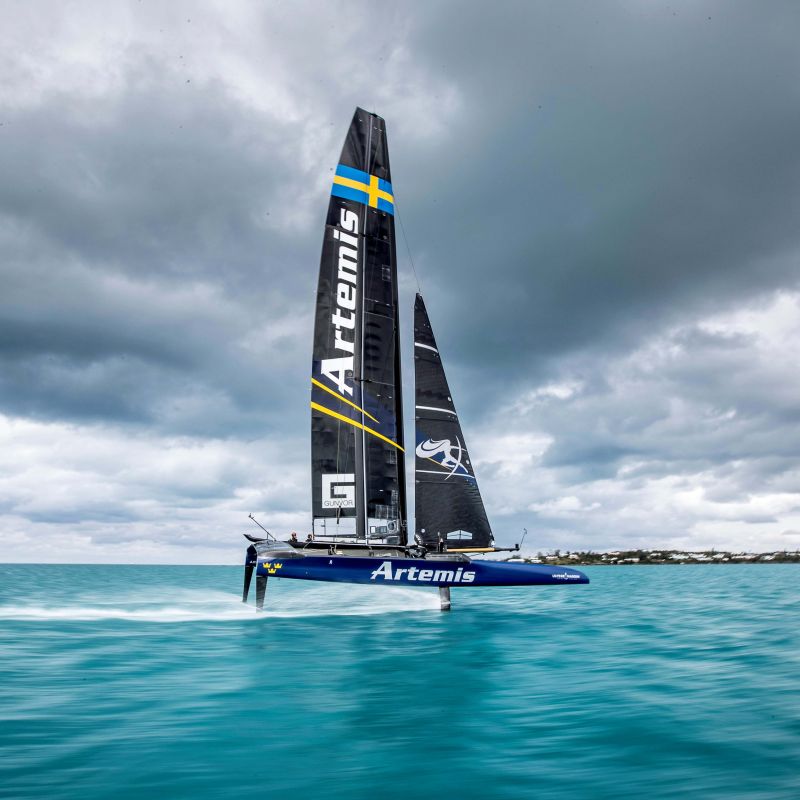The world of maritime engineering research can take you to amazing – even glamorous – places. Associate Professor Jonathan Binns’ expertise in research and development of fast boats landed him in Bermuda and the location of yachting’s biggest prize, the 35th America’s Cup with top team Artemis Racing.
Associate Professor Binns started working with Artemis two years ago when they wanted help understanding how the conditions in Bermuda would affect the design of their wings and foils.
The goal? To prove which of their designs would see the yacht sail faster and fly higher in the water.
He set to work with Michel Kermarec, a lead designer with Artemis, and Dr Max Haase from the Australian Maritime College to create a research program including testing procedures and analyses specifically designed for this new class of America’s Cup yachts.
Associate Professor Binns is also the director for the ARC Research Training Centre for Naval Design and Manufacturing RTCNDM, a national research training centre that brings together researchers from University of Tasmania, Flinders University and University of Wollongong to solve problems relating to the next generation of Australian naval vessels.
He explains how his work with Artemis applies multi-disciplinary research to the fastest yachts in the world.
“We used advanced measurement and analysis technology we’ve been working on since 2008. We’ve been refining that technology further in response to requirements from Defence Science and Technology Group (DST Group) over the last five years to come up with a technology package ideally suited to testing and measuring performance for these great boats,” he said.
“This is a perfect example of innovating within the defence industries and then exporting to the world.”
The America’s Cup Class of yacht are big and fast: 15 metres long, 8.5 metres wide and a massive 25 metres tall.
Weighing in at nearly 2,500 kg, it is astounding that the America’s Cup yachts are now racing at 100% airborne on hydrofoils – which sees the entire hull of the vessel lift out of the water.
It’s also the fastest yacht race in history: speeds of up to 45 knots have been regularly measured on the race course this year.
Having worked with Artemis to identify the best design, Associate Professor Binns was lucky enough to get to the America’s Cup with them to look closely at the flow patterns experienced over the vessel’s surfaces – important, as this high speed flow defines how these boats fly around the race course.
“Each day I went on the race course with the designers, and we'd use the delicate instruments I’d brought from Australia to measure what the air and water are doing,” he said.
This work is helping Artemis understand the fluid mechanics now and in the future behind the wings in the air and the water that make these machines fly.
“Once the designers have used this information to work their magic, the yacht flies faster.”
It’s a far cry from research in one of AMC’s hydrodynamic facilities, but Associate Professor Binns relished experiencing the performance of both humans and machines at the world’s oldest sporting trophy event.
“It is absolutely amazing to be involved at this level. The Artemis team is incredible to work with, all dedicated to the one goal: winning the America’s Cup,” he said.
“This regatta is like no other I’ve ever been to. These yachts are high-tech machines and their speeds were once thought unachievable. I’m seeing the realisation of what was once seen as an impossible dream.”
(Photo: Artemis Racing/Sander van der Borch)
Published on: 13 Dec 2017

